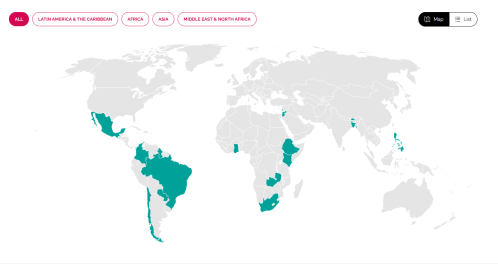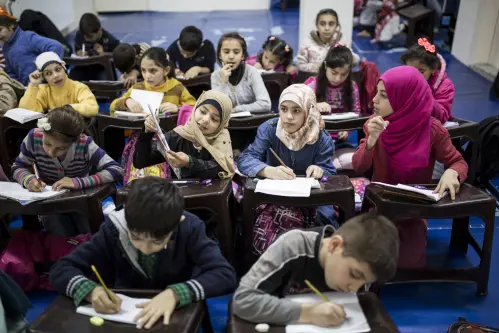If you want more content like this, subscribe to our newsletter.
This week in Class Notes:
- Early childhood education programs improve the long-term earnings and health of participants, as well as their children and siblings.
- Fathers’ multiple-partner fertility is associated with lower educational outcomes for children.
- School quality explains over half of the effect of moving to a new neighborhood on educational attainment.
- This week’s top chart shows that granting citizenship to America’s undocumented immigrants would boost GDP and tax revenues.
- William E. Spriggs argues that reducing the Black unemployment rate is important from both a moral and economic perspective in this week’s choice op-ed.
- Check out our latest piece on why we need to reward work and tax wealth to support the middle class.
- For your calendar: attend virtual events on creating an inclusive economy for workers, amplifying student voices in policymaking, and understanding the pandemic’s impact on women.
Early childhood education programs improve the long-term earnings and health of participants, as well as their children and siblings
By definition, it takes a long period of time for the long-term effects of early childhood education investments to materialize. Most studies therefore either focus on short-term effects or use (potentially biased) statistical methods to impute long-term effects. In their new paper, Jorge Luis Garcia and his co-authors provide the first analysis of an early childhood education program where long-term outcomes are directly observed. They use data from the Perry Preschool Project (PPP), an influential randomized-control trial conducted in the 1960s that provided two years of preschool education to 123 disadvantaged Black children in Michigan. The data includes earnings, education, and health outcomes for program participants through age 54, as well as for their family members. The authors find that in the long run, “PPP increases the education and earnings of participants, reduces crime, and improves health and healthy behaviors.” Furthermore, the program improves outcomes for the children and siblings of participants. Using a benefit-cost analysis, the authors find that the program has an enormous return on investment. Among participants, the program generates over $9 for every dollar invested in it. If the program effects on participants’ children are included, the return to each dollar invested is $10.65. If sibling benefits are added, the returns rise to a remarkable $13.52.
Fathers’ multiple-partner fertility is associated with lower educational outcomes for children
Family structure and social relationships can play a crucial role in shaping children’s educational and economic outcomes in adulthood (in fact, we dedicate an entire chapter to relationships in our latest book). In a new paper, Donna K. Ginther and her co-authors study the short and long-term educational outcomes of children who grow up in nuclear families with a multiple-partner fertility (MPF) father – i.e. a father who has had children in a previous relationship. Using data from Norway covering all children born between 1986 and 1988, the authors find that children raised in an MPF father’s second nuclear family are 7 percentage points more likely to drop out of secondary school and 7 percentage points less likely to obtain a bachelor’s degree than children raised in a nuclear family without an MPF father. After controlling for parent and child characteristics, such as income and age, the educational attainment gaps shrink but do not disappear. The authors rule out one possible explanation – resource competition with the father’s children from his first family. Instead, the differences seem to be attributable to unobservable differences between MPF fathers and non-MPF ones.
School quality explains over half of the effect of moving to a new neighborhood on educational attainment
Raj Chetty, along with his Opportunity Insights team, has shown that the neighborhoods in which children grow up shape a wide range of adulthood outcomes, including earnings, educational attainment, and marriage patterns. To what extent can these effects be explained by school-quality differences between neighborhoods? To answer this question, Jean-William Laliberté uses longitudinal data that tracks students from Montreal, Quebec through their entire educational careers. To isolate the effect of schools on educational outcomes, Laliberté conducts two analyses. First, he uses a regression discontinuity design based on school district boundaries to measure the effect of school quality on long-term educational outcomes. Then, he measures the “total exposure effect” of a neighborhood by looking at the outcomes of children whose families moved neighborhoods while they were in school. Like Chetty and Hendren (2018a), Laliberté finds that moving to a neighborhood with higher levels of educational attainment early in childhood increases educational attainment levels significantly. Combining the two analyses, Laliberté concludes that around 50-70% of the effect on educational attainment of moving to a given area is due to access to better schools.
Top chart: Granting citizenship to America’s undocumented immigrants would boost GDP and tax revenues
This week’s top chart shows that granting citizenship to America’s undocumented immigrants would boost the economy. Under the most ambitious policy proposal, GDP would increase by $1.5 trillion and an additional $350 billion would be raised in taxes over a 10-year period.

Choice opinion: Reducing the Black unemployment rate is important from both a moral and economic perspective
“[S]ince April 2020, the ratio of Black to white unemployment has been on a path to return to its typical level — with Black workers experiencing twice the level of unemployment as their white neighbors. There are good reasons for both central bankers at the Federal Reserve and policymakers in Congress to not complacently slip back into tolerating these disparities as an acceptable facet of economic normalcy,” writes William E. Spriggs. “Ignoring the Black unemployment rate isn’t just a moral issue, it ignores potential growth for the economy.”
Self-promotion: Reward work and tax wealth to support the middle class
In “A New Contract with the Middle Class,” Isabel Sawhill and I document the numerous ways in which the American middle class is falling behind — not least in terms of income. So what’s to be done? In this summary article, Christopher Pulliam highlights a key principle that underlies many of our policy proposals: tax wealth, and reward work. The middle class’s slow wage growth over the last 40 years along with the shift in power from labor to capital call for a pro-work policy agenda that centers the middle class. Our pro-work proposals include a $12 per hour federal minimum wage floor, worker tax credits for the bottom half of wage earners, and abolishing the income tax for the middle class, among others. To make up for lost revenue from middle class tax cuts, we should tax wealth by eliminating step-up basis at death and expanding the estate tax. These two measures alone would raise around $135 billion a year.
For your calendar: attend virtual events on creating an inclusive economy for workers, amplifying student voices in policymaking, and understanding the pandemic’s impact on women
Leveraging workers’ skills for an inclusive economy: Tools, resources, and evidence
Thursday, July 22, 2021 12:00 PM – 1:30 PM EDT
Urban Institute
Student voice in federal policymaking
Thursday, July 22, 2021 2:00 PM – 3:00 PM EDT
Center for American Progress
Women, work, and care: The pandemic and its aftermath
Thursday, July 22, 2021 3:30 PM – 5:00PM EDT
The Century Foundation








Commentary
Class Notes: Early childhood education’s effects, the Black unemployment rate, and more
July 26, 2021